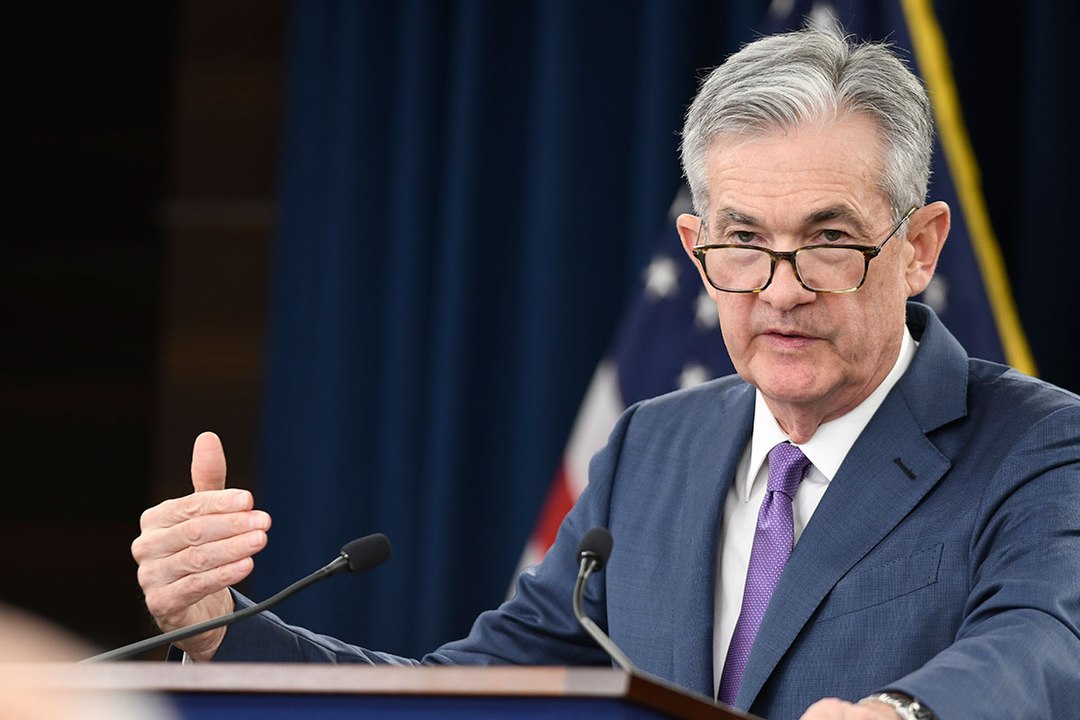Fed’s New Projections Hint at a Slower Easing Cycle Through 2026
19.06.2025 15:00 2 min. read Alexander Stefanov
The Federal Reserve left its target range at 4.25–4.50 percent for a fourth straight meeting and quietly dialed back how much easing it expects through 2026.
Fresh “dot plot” projections show seven officials now see no rate cuts this year—up from four in March—while the median path for 2026 was trimmed to a single cut.
Why the Fed’s Foot Is Still on the Brake
Tariffs cloud the outlook. President Donald Trump’s recent import levies have lifted average U.S. duties to Depression-era levels, muddling inflation forecasts and prompting officials to wait for clearer price data.
Labor signals are mixed. Payroll growth is slowing and long-term jobless claims sit at a three-year high, yet the headline unemployment rate remains low.
Financial conditions stay loose. Corporate-bond spreads are tight, credit is flowing and equities hover near records—helped in part by buzz around stablecoin-based payment plays—giving policymakers little urgency to ease.
Politics Adds Heat, Not Light
Hours before the decision, Trump blasted Chair Jerome Powell as “very stupid” and demanded up to 250 basis points of cuts, arguing tariffs aren’t stoking consumer prices. Fed officials appear unconvinced; most want proof that higher import costs won’t filter through before pulling rates lower.
The Road Ahead
Soft May inflation numbers suggest firms may be eating tariff costs for now, but economists say shrinking margins could lead to layoffs later in the year. Until the data clarify whether tariffs or job losses pose the bigger threat, the Fed is likely to keep policy steady—at least until autumn—balancing its inflation fight against the risk of stalling the recovery.
-
1
Russia’s Oil Revenues Strained as Exports Decline Again
24.06.2025 18:00 2 min. read -
2
Recession Fears Linger as Economic Signal Flashes Long-Term Warning
25.06.2025 9:00 2 min. read -
3
Robert Kiyosaki Predicts When The Price of Silver Will Explode
28.06.2025 16:30 2 min. read -
4
Trump Targets Powell as Fed Holds Rates: Who Could Replace Him?
27.06.2025 9:00 2 min. read -
5
U.S. PCE Inflation Rises for First Time Since February, Fed Rate Cut Likely Delayed
27.06.2025 18:00 1 min. read
Key U.S. Economic Events to Watch Next Week
After a week of record-setting gains in U.S. markets, investors are shifting focus to a quieter yet crucial stretch of macroeconomic developments.
Robert Kiyosaki Predicts When The Price of Silver Will Explode
Robert Kiyosaki, author of Rich Dad Poor Dad, has issued a bold prediction on silver, calling it the “best asymmetric buy” currently available.
U.S. PCE Inflation Rises for First Time Since February, Fed Rate Cut Likely Delayed
Fresh data on Personal Consumption Expenditures (PCE) — the Federal Reserve’s preferred inflation gauge — shows inflation ticked higher in May, potentially delaying the long-awaited Fed rate cut into September or later.
Trump Targets Powell as Fed Holds Rates: Who Could Replace Him?
Federal Reserve Chair Jerome Powell is once again under fire, this time facing renewed criticism from Donald Trump over the Fed’s decision to hold interest rates steady in June.
-
1
Russia’s Oil Revenues Strained as Exports Decline Again
24.06.2025 18:00 2 min. read -
2
Recession Fears Linger as Economic Signal Flashes Long-Term Warning
25.06.2025 9:00 2 min. read -
3
Robert Kiyosaki Predicts When The Price of Silver Will Explode
28.06.2025 16:30 2 min. read -
4
Trump Targets Powell as Fed Holds Rates: Who Could Replace Him?
27.06.2025 9:00 2 min. read -
5
U.S. PCE Inflation Rises for First Time Since February, Fed Rate Cut Likely Delayed
27.06.2025 18:00 1 min. read


